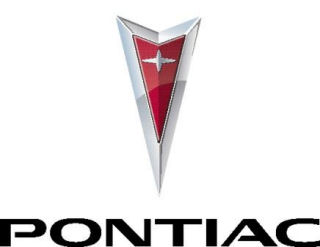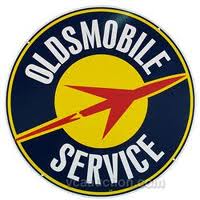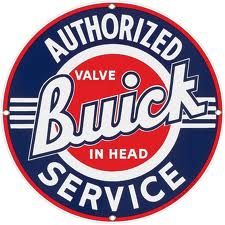This page was last updated: 7/4/2016
 | ||||

Racing




Mechanical Repairs - Performance Modifications - Technical Diagnostics & Vehicle Customization
Performance Based
** Technical Information **
>> Cooling Systems <<
>> Fuel Systems <<
>> Automatic Transmissions & Torque Converters <<
>> Manual Transmissions & Clutches <<
>> Braking Systems <<
>> Electrical Systems <<
>> Ignition Systems <<
>> Differentials <<
>>> Click on the Desired Category to Go to that Place on the Page...
Braking Systems
Cooling Systems
Electrical Systems
Fuel Systems
>> Engines <<
>> Air Intake Systems <<
>> Exhaust Systems <<
Air Intake Systems
Exhaust Systems
Ignition Systems
Steering & Suspension Systems
** Selecting and Installing a Rack & Pinion Steering Unit in a Fabricated Chassis
or when using a Rack & Pinion Steering Unit to Replace the Factory Steering Box and Steering Linkage.
-- Determining Rack & Pinion Length:
The Most Important Dimension, that needs to be known before selecting the Rack & Pinion Steering Unit, is the Distance BETWEEN the Pivot Points of Both Inner Tie Rod Ends. This is NOT the Published "Overall Length".
This "Desired" Distance should be Equal (+/-) to the Distance between the Centerlines of the Two Lower Control Arms' Pivot Points. Those Centerlines are the Lower Control Arm Bushing/Bolt Centerlines. Picture in your mind that the Rack & Pinion Unit Mounts to the Frame of the Vehicle between the Lower Control Arms. Now Picture that the Rack & Pinion's Tie Rods should Pivot Upward and Downward at the Same Locations, in Relation to the Vehicle's Chassis Centerline, as the Pivot Points for the Lower Control Arms.
>> HOWEVER, If it's found that the Outer Tie Rod End's Pivot Point, Due to it's Attachment Location, is Closer to the Vehicle's Chassis Centerline than the Lower Balljoint's Pivot Point Centerline, You can Compensate for this to a Certain Degree by Decreasing the Distance Between the Inner Tie Rod End's Pivot Points by that SAME Amount. Effectively Shortening the Rack & Pinion Steering Gear Unit while Maintaining an Inner and Outer Tie Rod Assembly Length Equal to the Lower Control Arm's Centerline Length that was Previously Discussed and Determined.
Here's what I did to a Wilwood Rack & Pinion to Correct this Length >>>>>
-- Determining Rack & Pinion Length w/Tie Rod Assemblies:
Measure the Distance BETWEEN the Left and Right Lower Control Arm Pivot Points.
(This is the Distance from One Lower Control Arm's Bushing/Bolt Centerline to the Other Lower Control Arm's Bushing/Bolt Centerline.)
Then Measure the Distance from the Lower Control Arm Bushing/Bolt Centerline to the Lower Ball Joint "Pivot Point" Centerline. These Dimensions will be Referenced when You Select Your Rack & Pinion Steering Gear Unit and Fabricate the Inner and Outer Tie Rod Assemblies.
The next Step is to Determine the Location of the Outer Tie Rod End Attachment Point at the Steering Knuckle/Spindle Assembly. This Attachment Point when Compared to the Lower Ball Joints Pivot Point Centerline is VERY Important. Theoretically Speaking, what we're Striving for is to have the Length of the Inner and Outer Tie Rod Assembly (From Pivot Point to Pivot Point) to be Equal to the Length of the Lower Control Arm from the Bushing/Bolt Centerline to the Ball Joint Pivot Point Centerline. We would Also Love to have Each of the Inner and Outer Pivot Points, for the Rack & Pinion Steering Gear and the Lower Control Arm, be in the Exact Same "Relative" Position in the Vehicle's Chassis. But, as You'll See, that may NOT always be Possible.
-- Rack & Pinion Mounting Location:
Theoretically Speaking, You now have a Rack & Pinion Steering Gear Unit that has the Correct Lengths and Pivot Points for the Inner and Outer Tie Rod Assemblies. These Lengths and Pivot Points are of course in Relation to the Length Between the Pivot Points of the Lower Control Arm's Mount Bushing Centerlines and Ball Joint Centerlines, as was Previously Mentioned.
Therefore, what now becomes most important is the Tie Rod Assemblies and their Angularity in Relation to the Angularity of the Lower Control Arms. To Determine the Angularity of the Lower Control Arm you must Draw an Imaginary Line that Intersects the Control Arm's Mount Bushing/Bolt Centerline at the Line's Inner Most Point and then Intersects the Lower Ball Joint's Pivot Point Centerline at the Line's Outer Most Point. That Imaginary Line's Angle in Relation to Level is the Angle that You Must Duplicate when Mounting the Rack & Pinion Steering Gear Unit to the Vehicle's Frame. It's Imperative that the Angularity of the Rack & Pinion's Tie Rod Assemblies Matches the Lower Control Arm's Imaginary Line Angularity.
>> WHY IS THIS IMPORTANT? Once again, Picture in Your Mind how the Inner Pivot Point for the Tie Rod Assemblies and the Inner Pivot Points for the Lower Control Arms are "FIXED", meaning that they don't move up and down in Relation to the Vehicle's Frame. Now, Picture in Your Mind that the Outer Tie Rod End Pivot Points and the Lower Control Arm's Ball Joint Pivot Points aren't "Fixed", meaning that they DO move up and down in Relation to the Vehicle's Frame. Now, as the Tie Rod Assemblies and Lower Control Arms Travel Upward and Downward they Actually Travel in a Circular Arc around their Inside Pivot Points. IF this ARC of Circular Travel is DIFFERENT for the Tie Rod Assemblies and the Lower Control Arms, the Result will be that as they Travel Upward and Downward, the Wheels will Steer Inward and Outward. This is known as BUMP STEER.........
>> Angularity of the Rack & Pinion Steering Gear Unit's Tie Rod Assemblies and It's Position in the Chassis in Relation to the Chassis' Centerline is what's Important. What is NOT as important is the Mounting Distance, Upward or Downward in the Chassis, in Relation to the Lower Control Arm's Position. BUT, REMEMBER ANGULARITY IS IMPORTANT!!!!!
Therefore, if Due to Necessity, You Must Mount the Rack & Pinion Steering Gear Unit Higher or Lower than the Control Arm's Position in the Chassis, You MUST do so Equally/Evenly. If for Example the Pivot Points for the Inner Tie Rod Ends are 2" Below the Inner Pivot Points (The Bushing/Bolt Centerline) for the Lower Control Arms, then the Outer Pivot Points for the Tie Rod Ends MUST be 2" Lower than the Lower Control Arm's Outer Pivot Point (The Ball Joint Pivot Point Centerline) to Maintain the Correct Tie Rod Assembly Angularity in Relation to the Lower Control Arm Angularity.
-- Bump Steer and Bump Camber:
Bump Steer = The Inward "Toe In" and Outward "Toe Out" Change of the Forward/Leading Edge of the Tire that can Occur as the Suspension Travels through it's Range of Motion.
(For Drag Racing and Street Car Purposes, I Shoot for NO MORE than a 1/16" Toe Change Per Tire for a Total Toe Change to Not Exceed 1/8".)
Bump Camber = The Inward Tilt "Negative Camber" and Outward Tilt "Positive Camber" Change of the Upper Edge of the Tire that can Occur as the Suspension Travels through it's Range of Motion.
(For Drag Racing and Street Car Purposes I Shoot for NO MORE than a 0.75* Change.)
NOTATION:
For Circle Track and Road Racing Applications, Varying Degrees of Camber Change and Toe Change is not only Acceptable it's Desired.
-- Measuring Bump Steer and Bump Camber:
Bump Steer
1) Remove the Coil Spring and Shock (On an A-Arm Chassis)
2) Reassemble the Suspension without the Coil Spring or Shock.
3) Attach a Straight Edge Across the Brake Rotor or Wheel Hub Flange Surface so that the Straight Edge is Level and so that the Straight Edge Protrudes Past the Front and Rear Ends of the Rotor's Braking Surface an Equal Distance.
4) Tape a Sufficiently Sized Piece of White Poster Board Paper to the Garage Floor Directly below the Straight Edge/Rotor Area.
(Make the Paper at least 3" Longer and 6" Wider than the Length and Width of Your Straight Edge.)
5) With the Suspension at it's Greatest Downward Travel Position. Drop a Plumb Bob off of the Furthest Forward Edge of Your Straight Edge Down to the White Paper and make a Dot at this Contact Point on the Paper. Now do the Same thing from the Furthest Rearward Edge of the Straight Edge. Number these Dots, Number 1. (Make Sure that the Straight Edge Remains Level Every Time that You Drop the Plumb Bob.)
6) Continue to do this in One Inch Increments from the Furthest Downward Travel Point of Your Suspension to the Furthest Upward Travel Point of Your Suspension. Simply Use a Floor Jack and a Tape Measure to Accurately Perform these One Inch Travel Changes. Remeber to Mark the Dots 1, then 2, then 3 and so on.
7) Once You've Completed the Travel and You've Made All of the Marks it's now a matter of connecting the Dots. 1 to 1, 2 to 2, 3 to 3 and so on. Label each Line 1 for Dots 1 , 2 for Dots 2 and so on.
8) You have now created a "Toe Change" Graph on a Piece of Paper. Now, You'll find that the Lines that You have Created get Closer to the Chassis Centerline and Further Away from the Chassis Centerline as the Suspension Travels Upward and Downward. This is Due to the Circular Arc that the Outer End of the Lower Control Arm Travels as it Pivots Around it's Inner "Fixed" Pivot Point. (The Bushing/Bolt Centerline.)
9) Measure the Distance Between Your Lines at the Front Dots and then at the Rear Dots. If the Distance from Dot 1 to Dot 2 at the Front Dots is Equal to the Distance Between Dot 1 and Dot 2 at the Rear Dots then You have "NO CHANGE" in Toe During the First One Inch of Upward Suspension Travel. Continue this Calculation from Dot 1 to Dot 3, then Dot 1 to Dot 4 and so on to Determine the Amount of Toe Change as the Suspension Travels through it's Range Of Motion.
Bump Camber
1) Simply Attach a Magnetic Angle Finder to the Outer Rotor Surface or Wheel Hub Flange.
2) Monitor the Angle Change while the Suspension Travels from it's Furthest Downward Position to it's Furthest Upward Position. The Change in Angles is the CAMBER CHANGE.
-- Bump Camber and It's Effect on Bump Steer:
Here's a Couple of Rules to Remember Concerning "Bump Camber" and it's Effect on "Bump Steer".
1) If the Pivot Point for the Outer Tie Rod End is in the Same Location as the Pivot Point for the Lower Ball Joint (In Relation to the Spindle Centerline) then even if there is Exceesive "Bump Camber" it will have Little Effect on "Bump Steer".
2) As the Pivot Point for the Outer Tie Rod End gets Further Away from the Lower Ball Joint Centerline (In Relation to the Spindle Centerline), "Bump Camber" will have a Greater and Greater Effect on " "Bump Steer" as this Distance Increases.
(This is where Excessive "Bump Camber" can lead to Excessive "Bump Steer", even if You've Fabricated the Correct Length of Tie Rod Assemblies and the Rack & Pinion Steering Gear Unit was Mounted at the Correct Angularity in Relation to the Lower Control Arms and Centered Properly in Relation to the Vehicle's Chassis Centerline.)
** Be Sure ot Have the Vehicle Level, Front to Rear and Side to Side before Proceeding **
Article By: Larry Snyder 04/07/2014
